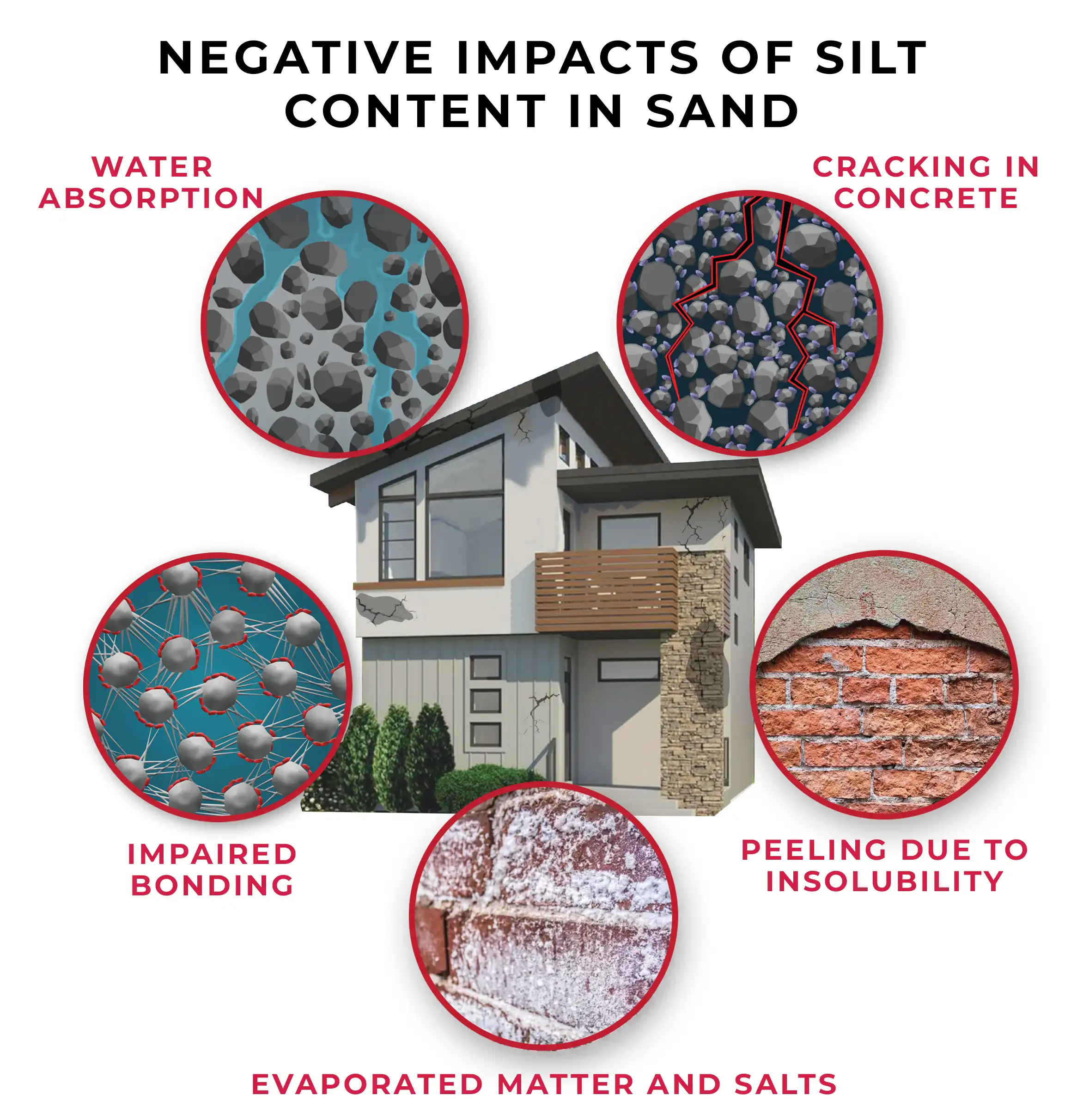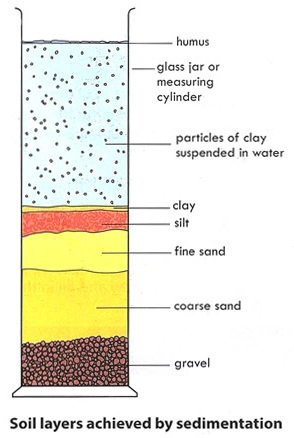
Silt is a harmful substance that can potentially harm your building. Silt is something you should be aware of as a house owner. This article helps us understand what silt is? How do you make sure the sand is silt-free? What is the negative effect of silt on sand? Where can you buy silt-free sand for your home? Make sure to read the complete article to get the best sand for your home.
What is Silt?
Silt or ultra fines are extremely fine particles found in m sand. These ultra fines are typically smaller than 75 microns in size.
Impact of Silt Content on Sand

Water Absorption:
Silt absorbs more water than sand, which affects the overall moisture content of the material with which it is mixed, such as concrete or mortar.
Cracking in Concrete:
When silt is present in concrete, it can cause cracks to form as the material dries and hardens. Silt particles interfere with the proper bonding and structural integrity of the concrete.
Impaired Bonding:
Silt can interfere with the bonding between cement and aggregates, compromising the material's strength and cohesion. This can result in decreased durability and structural stability.
Presence of Evaporated Matter and Salts:
The presence of evaporated matter and salts in silt can disturb the quality and performance of construction materials. These impurities can contribute to degradation, corrosion, and other chemical reactions.
Unstable in Water:
When exposed to water, silt loses its stability. When used in mortar or plastering, silt particles can dislodge or separate from the surface, causing the mortar layer to peel or detach. This insecurity impacts the overall integrity and appearance of the completed application.
Note: Read this article to know more about Sand Quality Test.
How to Test Silt Content in Sand?
There are several methods for testing the silt content of sand. Here are three techniques that are commonly used:
a) Sedimentation Test:

-
Collect the sample of sand.
-
Mix the sand with water in a container and stir vigorously.
-
Allow the mixture to settle for 3 hours or overnight.
-
Now, observe the sedimentation layers. The top layer will be composed of organic matter, followed by silt, and then sand.
-
Measure the thickness of the silt layer and calculate the silt content as a percentage of the total sample.
b) Sieve Analysis:

-
Collect the sample of Sand.
-
Set up a series of sieves with smaller mesh sizes, placing the finest sieve at the bottom.
-
Pour the sand into the sieve and shake.
-
Weigh the remaining material in each sieve.
-
Calculate the remaining silt particles based on the weight retained in the appropriate sieve sizes.
c) Hydrometer Analysis:

-
Prepare a suspension of sand and water in a specific ratio.
-
Allow the suspension to settle for a predetermined amount of time.
-
Insert a hydrometer into the settled suspension and record the reading.
-
Based on the hydrometer reading, consult a hydrometer analysis chart or perform calculations to determine the percentage of silt present in the sand.
Does M Sand Contain Silt?
Yes, M sand contains silt, which is unsuitable for construction. Read this article to know why M sand is not suitable for construction.
Where Can I Get Silt-Free Sand?
While getting silt-free sand can be difficult, it is not impossible. Alpha C Sand is one option that stands out for providing high-quality, silt-free sand. Alpha C sand is well-known for its exceptional silt-free properties, making it an excellent choice for buildings that require crack-free and stable structures.
Finding silt-free sand can ensure a building's structural integrity and longevity. With its low silt content, Alpha C sand has numerous advantages. The risk of issues such as cracking, instability, and compromised durability can be significantly reduced by using silt-free sand such as Alpha C Sand. This encourages the construction of buildings that are strong, dependable, and resistant to silt particle damage.
While silt-free sand may not be widely available, obtaining it from reputable suppliers such as Alpha C sand can ensure a high-quality product. Builders and construction professionals can achieve their project goals and deliver superior results by partnering with suppliers specializing in silt-free sand.
Conclusion:
While silt-free sand may be difficult to find, Alpha C sand is a dependable source of high-quality sand. Construction projects can benefit from improved stability, crack-free structures, and improved overall performance by using this premium sand.